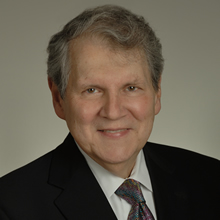
Dear Colleagues:
Take a moment to remember the earliest stage of your career. Remember a time when someone pointed you toward an opportunity to pursue a new research direction, or to get support to continue your work. This month’s letter focuses on similar opportunities and programs for today’s trainees, fellows, and early-stage investigators.
First, I want to remind you of the NIH Loan Repayment Programs, which I mentioned last year. This program could make a huge difference to people who are repaying their medical, dental, veterinary, or other educational debt. Pending enthusiastic review of the online application, NIH will repay up to $35,000 of eligible student loan debt per year. There are several opportunities, each with different eligibility criteria. The ones most likely to be of interest to extramural researchers studying NIAMS mission areas are the clinical research, pediatric research, and health disparities research programs. The National Institute on Minority Health and Health Disparities also offers a program for individuals from disadvantaged backgrounds who are pursuing clinical research careers. NIH will begin accepting applications for all extramural Loan Repayment Programs on September 1, 2015.
Second, NIH encourages early-stage clinician scientists and others who are conducting patient-oriented research to apply for K08 and K23 Career Development Awards. These grants support investigators as they develop their own biomedical, behavioral or clinical research program under the guidance of an experienced mentor. Analysis of these programs suggests that, NIH-wide, approximately half of the awardees successfully compete for an R01 research project grant—the gold standard for research independence at academic institutions. NIAMS data show that our K-awardees who receive additional funding from outside of the NIH (e.g., from professional societies, patient advocacy groups, or foundations) are even more likely to receive R01 funding than those who have only a K award.
This brings me to my third point, mentioned in last month’s letter: non-NIH sources of support. Many professional societies and other organizations have their own grant programs. Some—such as the American Society for Bone and Mineral Research , Lupus Foundation of America , and Parent Project Muscular Dystrophy —offer bridge or gap funding to investigators whose meritorious applications to NIH or other agencies were not selected for funding. Organizations including the Orthopaedic Research and Education Foundation , Rheumatology Research Foundation , and Muscular Dystrophy Association offer career development awards that complement or supplement our mentored career development programs. Most scientific societies offer smaller grants to encourage early-stage investigators and trainees to attend annual meetings. Other groups (e.g., the Society for Investigative Dermatology and the U.S. Bone and Joint Initiative ) offer grant-writing workshops or mentoring programs for people at their earliest career stages. Even if the monetary amount of an award is small, the application process provides a valuable opportunity for sharpening grant writing skills.
Every academic institution, as part of its mission, offers its own programs for students, post-doctoral fellows, and early-stage investigators. We hope this letter prompts additional thoughts about ways you can support the next generation of scientists by raising awareness of such opportunities. Please share this information, along with this letter, with any of your colleagues who could benefit.
Sincerely,
Stephen I. Katz, M.D., Ph.D.
Director
National Institute of Arthritis and Musculoskeletal and Skin Diseases
National Institutes of Health
